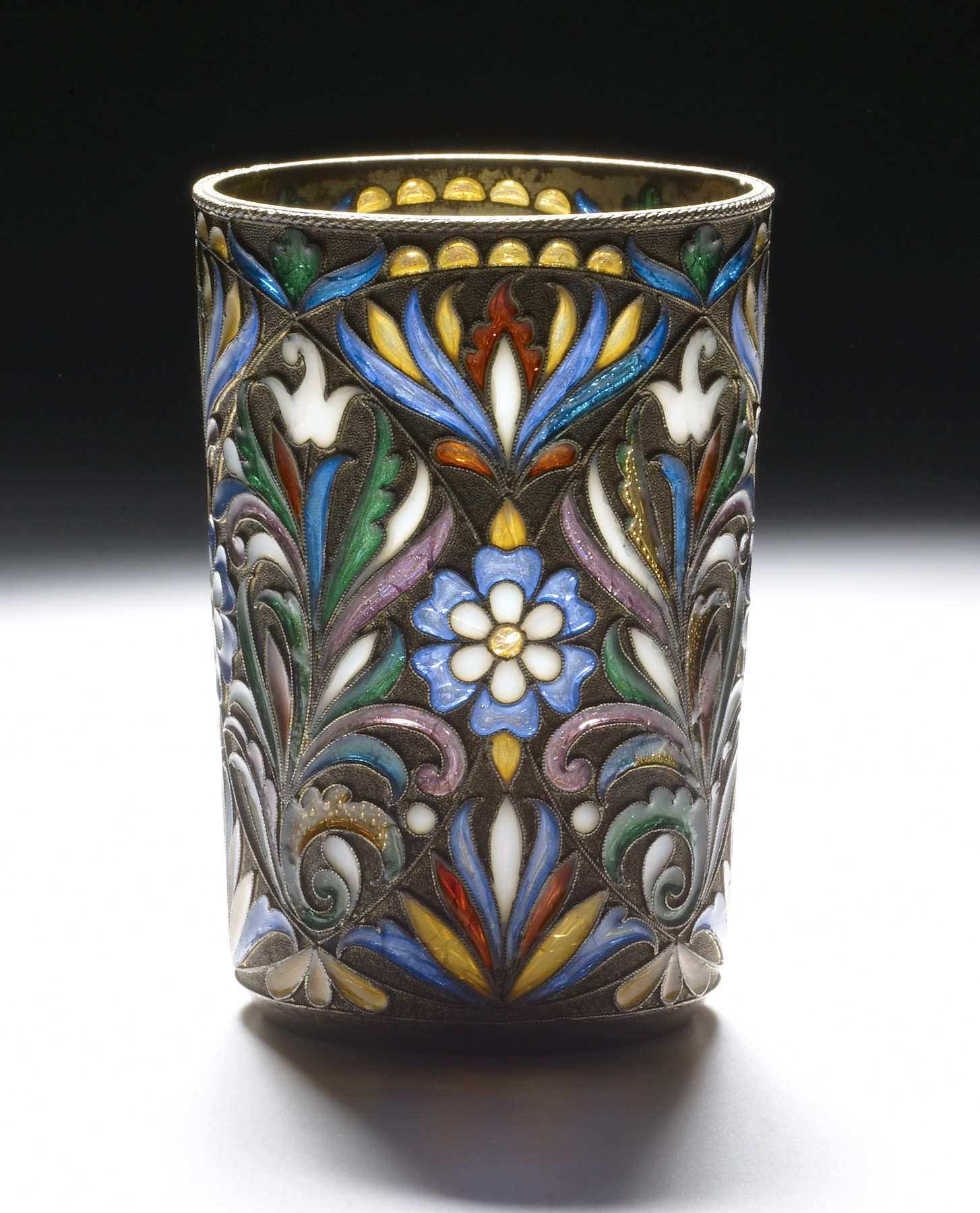Vodka Cup
(18th and 19th Centuries )
With the exception of its base, the entire vodka cup has been executed in plique-à-jour enamel. The patterns include four plants with six-petaled blossoms in blue and white, which alternate with those with three white petals. The foliage is in red, violet, green, and blue translucent enamel. This floral decoration is outlined with very fine filigree wire and is raised over a stippled silver gilding ground.
Inscription
Provenance
Provenance (from the French provenir, 'to come from/forth') is the chronology of the ownership, custody, or location of a historical object. Learn more about provenance at the Walters.
Jean M. Riddell, Washington, D.C.; by bequest to Walters Art Museum, 2010.
Exhibitions
| 2017-2018 | Fabergé and the Russian Crafts Tradition: An Empire's Legacy . The Walters Art Museum, Baltimore. |
Conservation
| Date | Description | Narrative |
|---|---|---|
| 2/14/2017 | Examination | Examined for exhibition. |
| 2/14/2017 | Treatment | Cleaned for exhibition |
| 2/14/2017 | Treatment | The cup was cleaned for inclusion in the exhibition, Faberge and the Russian Craft Tradition. The transparent enamels are cracked. Several losses are filled with a discolored resin. The gilded silver cup was tarnished. The tarnish was removed using a dry polishing cloth, followed by rinsing with odorless mineral spirits. |
Geographies
Russia, St. Petersburg (Place of Origin)
Measurements
H: 2 5/8 x Diam: 1 3/4 in. (6.6 x 4.4 cm)
Credit Line
Bequest of Mrs. Jean M. Riddell, 2010
Location in Museum
Not on view
Accession Number
In libraries, galleries, museums, and archives, an accession number is a unique identifier assigned to each object in the collection.
In libraries, galleries, museums, and archives, an accession number is a unique identifier assigned to each object in the collection.
44.978


